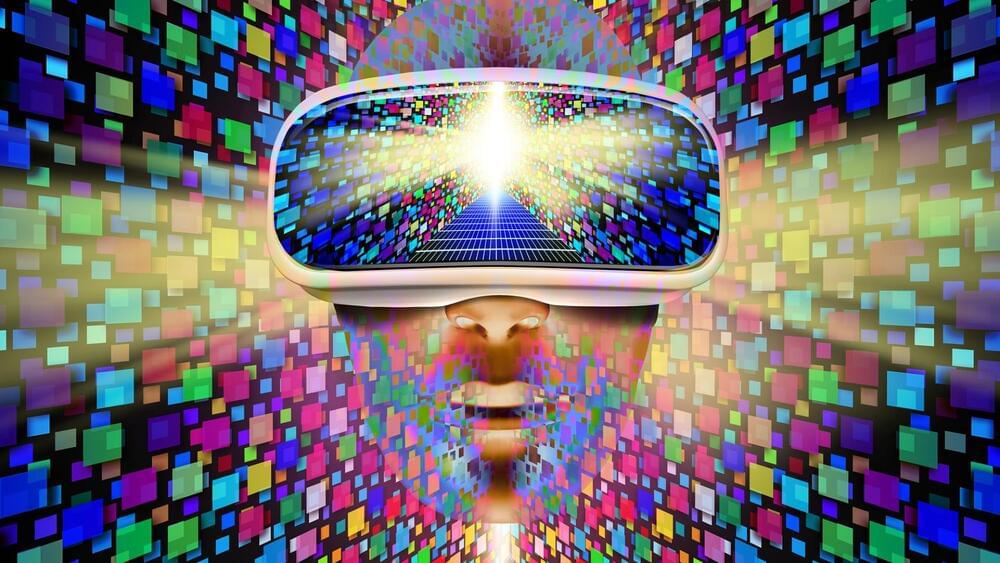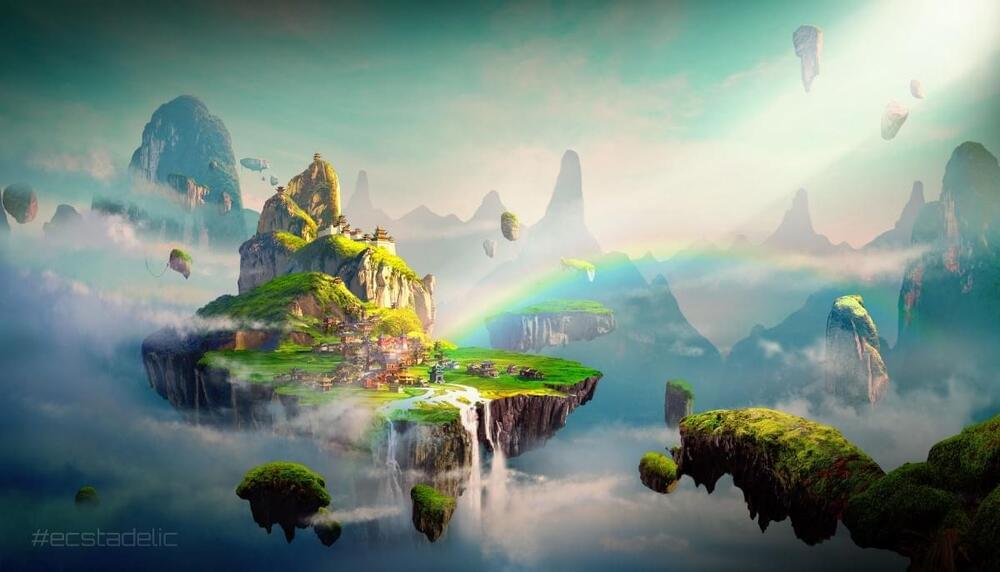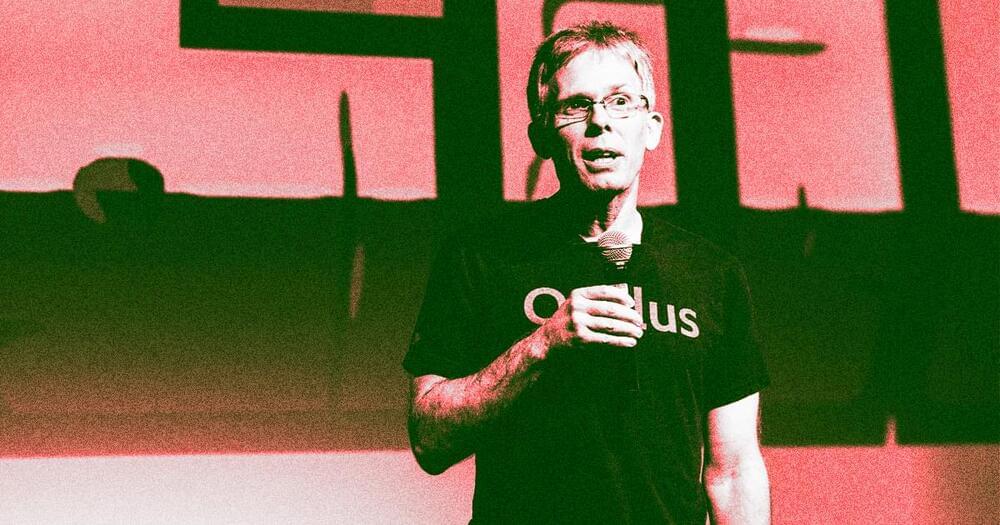TCL’s known for TVs. Now the company’s working on its own AR and VR hardware, too.
Category: virtual reality – Page 28
Researchers use virtual reality games to detect ADHD symptoms in children
Minor tweaks could expand its scope of applications to other conditions, such as autism.
Researchers used virtual reality (VR) games to diagnose attention-deficit hyperactivity disorder (ADHD) through differences in eye movements, according to a press release published by Aalto University. This method could potentially be utilized as a basis for ADHD treatment and, with minor tweaks, to assess other conditions like autism.
ADHD is a common attention disorder that affects six million U.S. children between the ages of 3 and 17 years, according to a national survey of parents.

Metaverse fails to meet expectations as VR headset sales shrink in 2022
Zuckerberg has stated that he expects it to take up to a decade for the metaverse to go mainstream.
Virtual reality (VR) technology, once hailed as the next big thing in the tech industry, has yet to live up to its hype. According to data acquired by CNBC.
Wildpixel/iStock.
What does the future hold for VR?
Meta acquires Luxexcel, a smart eyewear company
As Meta faces antitrust scrutiny over its acquisition of VR fitness developers Within, the tech giant is making another acquisition. Meta confirmed to TechCrunch that it is purchasing Luxexcel, a smart eyewear company headquartered in the Netherlands. The terms of the deal, which was first reported in the Belgian paper De Tijd, have not been disclosed.
Founded in 2009, Luxexcel uses 3D printing to make prescription lenses for glasses. More recently, the company has focused its efforts on smart lenses, which can be printed with integrated technology like LCD displays and holographic film.
ChatGPT Says: AI Will Change EVERYTHING
99% of the following speech was written by ChatGPT. I made a few changes here and there and cut and pasted a couple of paragraphs for better flow. This is the prompt with which I started the conversation:
Write a TED Talks style speech explaining how AI will be the next cross-platform operating system, entertainment service, and search engine as well as source of news and accurate information. Elaborate further in this speech about how this future AI could produce tailored entertainment experiences for the end-user. Explain its application in creating real-time, personally-tailored and novel media including mixed reality, virtual reality, extended reality, and augmented reality media as well as in written fiction and nonfiction, music, video and spoken-word entertainment for its end users. Write a strong and compelling opening paragraph to this speech and end it memorably. Add as much detail as you can on each point. The speech should last at least 15 minutes.
I used an online service called colossyan.com too produce the clips with metahumans. I used the reface app to put my face on some of the metahumans, but it unfortunately stepped on the video. I apologize for the blurriness.

Company Installs VR-Enabled Masturbation Pod for Employees
A sex startup says it’s created a VR-enabled masturbation pod for companies that want to make their employees very uncomfortable, very quickly.
Stripchat, a porn site, announced in a blog post that it’s developed something it’s dubbed a “Wank Pod” to give company employees a place to engage in a little office onanism. The company even installed one in their own workplace, and plans a commercial roll out in the future.
“Each ‘Wank Pod’ is planned to come fully equipped with masturbatory accessories, including a 4K LED screen to watch VR cams boosted by Dreamcam’s technology, an Oculus Quest VR headset, lotion, tissues, and more,” the startup wrote in the announcement.

Our Matrix-like Computational Universe: Programmable Realities & Cybernetic Apotheosis
Do we live in a matrix? Is our universe a metaverse in the next universe up? What is the code of reality? Is this a simulated multiverse? Can we cheat death and live indefinitely long? These are some of the questions we discuss in this recent talk.
#CyberneticTheory #CyberneticSingularity #DigitalPhysics #CodeofReality #CyberneticTheoryofMind #EvolutionaryCybernetics #consciousness #PhilosophyofMind #OmegaPointCosmology #PhysicsofTime #SimulationTheory #GlobalMind #SyntellectHypothesis #AGI #VR #Metaverse #TechnologicalSingularity #Transhumanism #Posthumanism #CyberneticImmortality #SyntheticTelepathy #MindUploading #neurotechnology #biotechnology #nanotechnology #FermiParadox #DarkMatter #DarkEnergy #cybergods #cybernetics

Virtual reality can work for those with one functional eye
Modern-day headsets and apps could be the key.
Virtual reality (VR) may soon be the way we use the internet. There are misconceptions about who can and cannot use the technology. Trying out headsets and apps is a great way to know if the technology suits your needs.
If you or someone you know only has one functional eye, and this has been keeping you away from exploring the world of virtual reality, then here’s a little surprise for you. VR experiences are not majorly affected if you do not use both of your eyes.
Thinkhubstudio/iStock.
We know this because users with two functional eyes have experimented with using VR with one eye and have found little that is different in their experience. There are many VR enthusiasts who vouch for this, and you can rest assured that you or a dear one can enjoy the experience too.
Cybernetic Theory: The Code of Reality & Our Future as Cybergods
In this talk titled CYBERNETIC THEORY: THE CODE OF REALITY & OUR FUTURE AS CYBERGODS at the Rotary Club, The Grand Autograph Hotel, Novosibirsk, Russia, on July 19, 2022, I go over many topics such as evolutionary cybernetics, Digital Physics, consciousness, philosophy of mind, cybernetic theory, Omega Point cosmology, physics of time, simulation theory, the Global Mind, AGI, VR, Metaverse, Cybernetic Singularity, transhumanism, posthumanism, cybernetic immortality, synthetic telepathy, mind-uploading, neurotechnologies, Fermi Paradox, the Dark Universe (Dark Matter and Dark Energy), the Argument for Cybertheism. The main 45-minute slide presentation is followed by a 15-minute Q&A session… More.
Russian-American futurist Alex M. Vikoulov presents his published works in a talk titled CYBERNETIC THEORY: THE CODE OF REALITY & OUR FUTURE AS CYBERGODS at the Rotary Club, The Grand Autograph Hotel, Novosibirsk, Russia, on July 19, 2022. The main 45-min.

John Carmack Quits Job Building Metaverse, Blasts Facebook
Facebook VR leader — and Doom creator — John Carmack has quit his advisory position at the company now known as Meta, and took to the social network to unsparingly explain his departure.
In a Facebook post, Carmack publicly shared his resignation email, which he said he decided to post after it had been partially leaked to the press.
“This is the end of my decade in VR,” the gaming pioneer’s note began. “I have mixed feelings.”